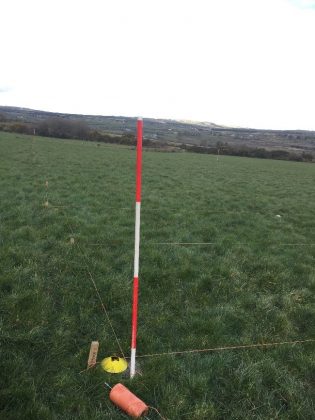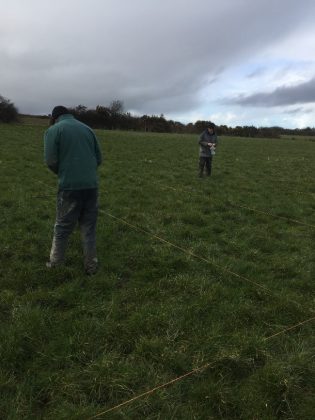The influence of contrasting liming products on poorly drained acidic soils
The paper “The influence of lime application on the chemical and physical characteristics of acidic grassland soils with impeded drainage”, published in The Journal of Agricultural Science, has been chosen as the latest Editorial Highlight and is freely available for one month.
Soil acidity and poor nutrient use efficiency are major limiting factors effecting many soils. Lime is applied to counteract soil acidity and improve nutrient availability and, in turn, improve agricultural output and productivity. However, the influence of lime application in conditioning and improving the overall health of grassland soils dominated by high proportions of clay and organic matter in high rainfall climates is unknown.
The current study investigated the effects of two commonly used lime products at three comparable treatment rates, ground lime (7.5, 5 and 2.5 tonne/ha) and granulated lime (7.5, 2.5 and 1.5 tonne/ha), applied across 3 distinct sites dominated by poor physical, chemical and climatic characteristics. The study aimed to determine the influence of such products and rates in reducing soil acidity, improving nutrient availability and assessing its influence on soil physical structure.
One tonne/ha of each lime product increased soil pH by 0.15 and 0.21 pH units between ground and granulated lime, respectively. Clay content and cation exchange capacity showed to have a major influence on the rate of change in soil pH. Granulated lime was 5.7 times more expensive than ground lime in its ability to reduce soil acidity. The high treatment rate of 7.5 tonne/ha showed the greatest reduction in soil acidity, and also aluminium and iron concentration across all sites. These metallic ions dictate the availability of nutrients, particularly phosphorus (P) and are unfavourable at high concentration levels in soil. All lime application rates increased soil test P concentration considerably, largely due to the reduction in metallic cation concentration and increase in soil pH. There was evidence of reduced soil compaction and the application of lime showed no negative implication on soil physical structure.
Due to the high buffering capacity and the poor nutrient availability of these particular soils it is imperative that optimum soil conditions are achieved in order to increase output potential. Reducing soil acidity and the abundance of metallic cations (iron and aluminium) through the addition of lime will improve soil health, the efficiency of applied nutrients and the availability of P.
Images of the experimental plots


The Journal of Agricultural Science Editorial Highlights are selected by the Editor-in-Chief and are freely available for one month. View the recent selections here.






